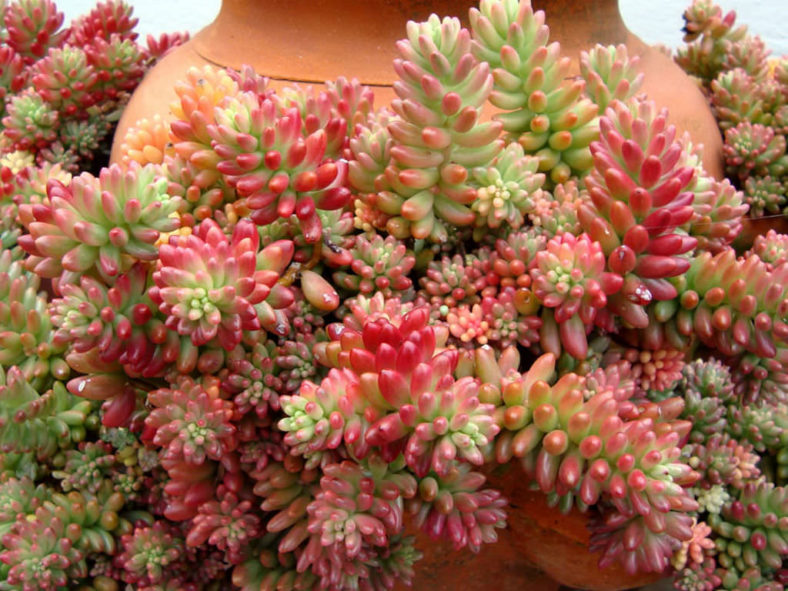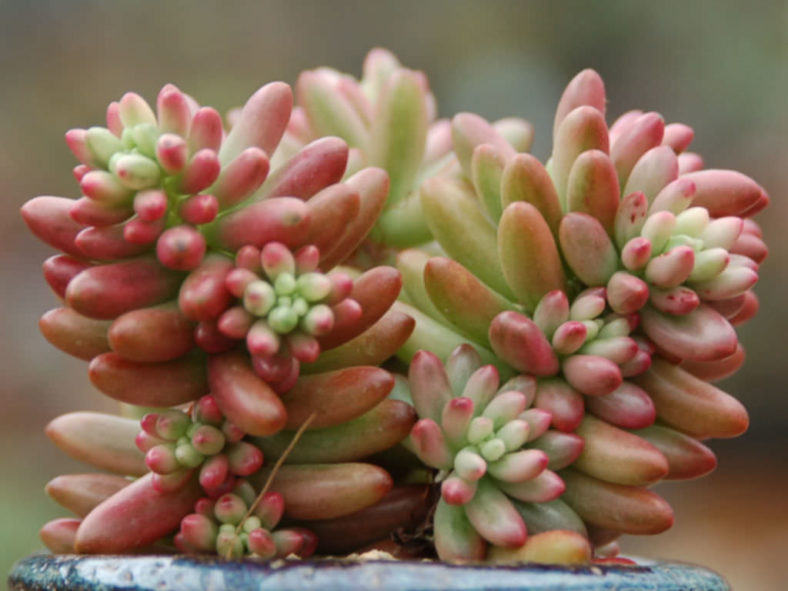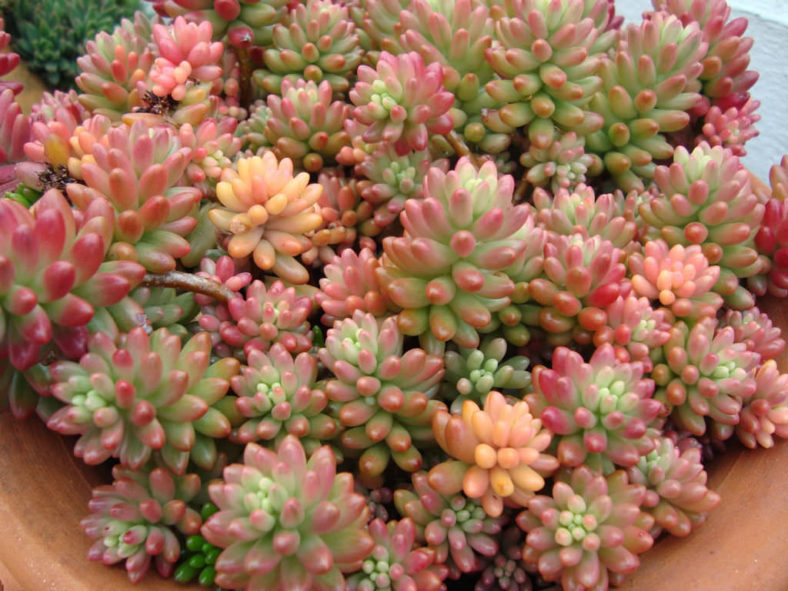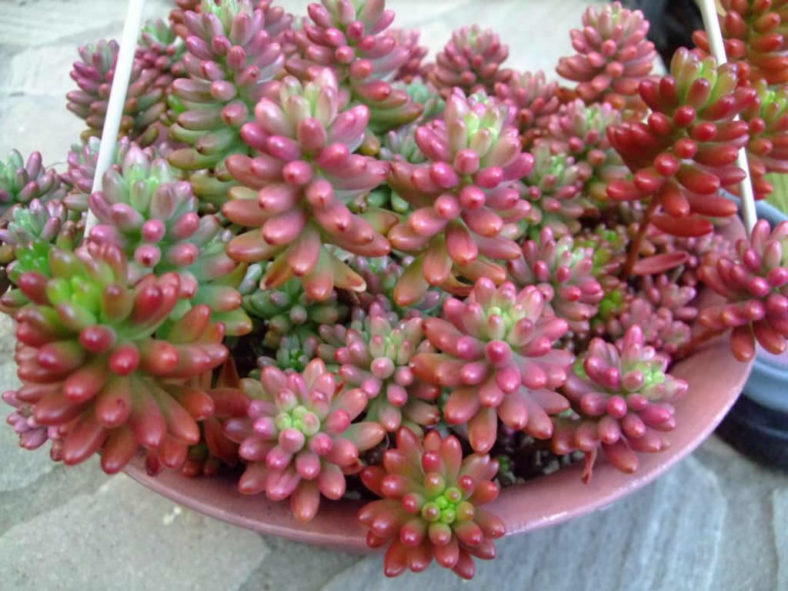Scientific Name
Sedum × rubrotinctum 'Aurora'
Common Name(s)
Jelly Bean, Pink Jelly Bean, Pink Stonecrop
Synonym(s)
Sedum rubrotinctum 'Aurora'
Scientific Classification
Family: Crassulaceae
Subfamily: Sempervivoideae
Tribe: Sedeae
Genus: Sedum
Origin
Sedum × rubrotinctum 'Aurora' is a cultivar of Sedum × rubrotinctum.
Description
Sedum × rubrotinctum 'Aurora' is a striking succulent with sprawling stems densely covered with bean-shaped leaves that emerge bright green but darken to vibrant pink. This plant can reach a height of 8 inches (20 cm). While the leaves may sometimes fade to pale green or even white shades, they display their most vibrant colors when exposed to intense sunlight.
In spring, Sedum × rubrotinctum 'Aurora' produces small, yellow, star-shaped flowers that bloom in dense clusters.
Propagation by leaves of this cultivar nearly always results in reversion to the normal form of Sedum × rubrotinctum.

How to Grow and Care for Sedum × rubrotinctum 'Aurora' (Pink Jelly Bean)
Hardiness: USDA hardiness zone 9a to 11b: from 20°F (-6.7°C) to 50°F (10°C).
When growing Sedums, keep in mind that these plants need very little attention or care. They will thrive in conditions that many other plants thrive in, but also do just as well in less hospitable areas. They are ideal for that part of your yard that receives too much sun or too little water to support the growth of other plants. A common name for Sedum is Stonecrop because many gardeners joke that only stones need less care and live longer.
Sedum is easily planted. For shorter varieties, simply laying the plant on the ground where you want it to grow is usually sufficient to get it started. They will send out roots from wherever the stem makes contact with the ground. To ensure the plant starts growing, you can add a very thin layer of soil over it.
You can break off one of the stems for taller varieties and push it into the ground where you want to grow it. The stem will root very easily, and a new plant will be established in a season or two.
Learn more at How to Grow and Care for Sedum.
Links
- Back to genus Sedum
- Succupedia: Browse succulents by Scientific Name, Common Name, Genus, Family, USDA Hardiness Zone, Origin, or cacti by Genus
Photo Gallery
Click on a photo to see a larger version.


